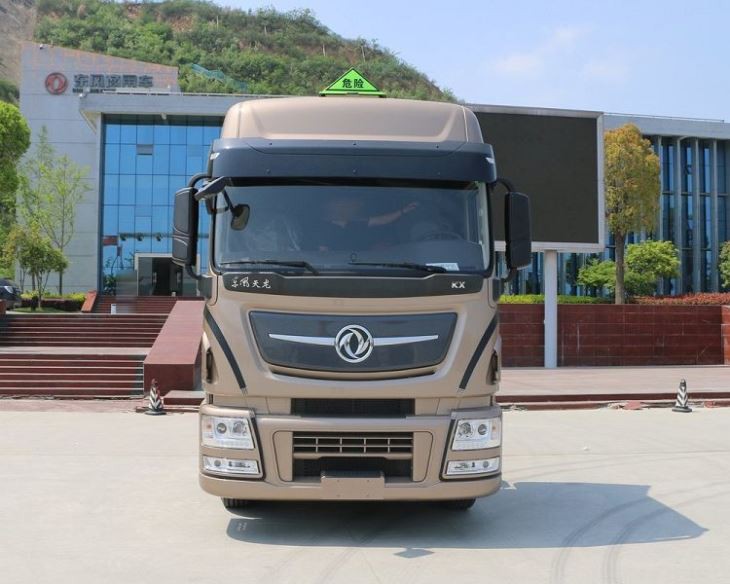Concrete mixer trucks are essential in transporting and mixing concrete for construction projects. Understanding the components, operation, and maintenance of these vehicles can prove invaluable for contractors, engineers, and construction workers alike. This article will delve deeply into the inside of a concrete mixer truck, covering everything from its parts to practical maintenance tips.
Understanding Concrete Mixer Trucks
A concrete mixer truck is designed specifically to mix, transport, and deliver concrete to construction sites. These vehicles are equipped with rotating drums that keep the concrete from solidifying during transit. This section will outline the basic concepts behind concrete mixer trucks.
The Components of a Concrete Mixer Truck
The effectiveness of a concrete mixer truck stems from its various components. Here are the primary parts:
- Truck Chassis: The main framework that supports the entire vehicle.
- Concrete Drum: The rotating part of the mixer that holds the concrete while it is transported.
- Control System: This system regulates the mixing speed and the angle of the drum.
- Water Tank: Necessary for mixing and adjusting the consistency of the concrete.
- Hopper: Additional compartment for holding additional ingredients during transport.
- Discharge Chute: For pouring out the concrete at the destination.
Types of Concrete Mixer Trucks
Concrete mixer trucks come in different designs that serve various purposes. The main types include:
1. Transit Mixers
These trucks mix concrete during transportation, ensuring it remains fresh upon arrival.
2. Central Mixers
This type prepares concrete at a central location and transports it to the site, typically in a stationary mixer truck.
3. Volumetric Mixers
Volumetric mixers combine ingredients as needed, allowing for customized concrete mixes on-site.
How Concrete Mixer Trucks Work
The Mixing Process
The mixing process in a concrete mixer truck involves several steps:
- Loading: Aggregates, cement, and water are loaded into the drum.
- Mixing: The drum spins to combine all components into a homogeneous mix.
- Transporting: The drum continues to rotate and prevents hardening as it moves to the site.
- Discharging: Upon arrival, the concrete is discharged through the chute into the desired location.
Ensuring Consistency and Quality
To maintain the quality of concrete, mixer trucks should ensure:
- Correct Mixing Ratios: Maintain the right proportions of cement, aggregates, and water.
- Proper Mixing Time: Mix for the appropriate duration to attain consistency.
- Regular Maintenance: Routine checks on the truck prevent operational issues.
Practical Examples and Tips for Using Concrete Mixer Trucks
Choosing the Right Truck for Your Project
Selecting an appropriate concrete mixer truck is vital for successful project completion. Here are some examples to consider:
| Project Size | Recommended Truck Type |
|---|---|
| Small Residential | Transit Mixers |
| Medium Commercial | Volumetric Mixers |
| Large Infrastructure | Central Mixers |
Best Practices for Loading and Unloading
Loading Tips:
- Ensure that the ingredients are added in the correct order.
- Weigh materials accurately to maintain mix ratios.
Unloading Tips:
- Position the chute efficiently for minimal spillage.
- Keep the area clean to prevent accidents during discharge.
Maintenance and Care for Concrete Mixer Trucks
Routine Maintenance Checks
To keep a concrete mixer truck in optimal condition, perform the following routine checks:
- Daily checks on brakes and hydraulics.
- Regular inspection of the drum and its interior for wear and tear.
- Monitoring the water tank levels and cleaning the chutes regularly.
Hydraulic System Maintenance
The hydraulic system controls various operations in the mixer truck. Maintenance involves:
- Inspecting hydraulic fluid levels.
- Regularly checking hoses for leaks or damage.
- Replacing filters as needed.
Safety Precautions When Using Concrete Mixer Trucks
Ensuring Worker Safety
Safety is paramount when operating a concrete mixer truck. Consider the following tips:
- Always wear appropriate personal protective equipment (PPE).
- Ensure proper training for all operators.
- Use spotters for visibility while maneuvering in tight spaces.
Vehicle Safety Features
Modern concrete mixer trucks come equipped with several safety features:
- Anti-lock braking systems (ABS).
- Rearview cameras for better visibility.
- Automatic shutoff systems for overload protection.
Innovations in Concrete Mixer Trucks
Advanced Technology
Recent technological advancements have significantly improved the functionality and efficiency of concrete mixer trucks. Examples include:
- GPS tracking for real-time monitoring.
- Smart sensors for automated mixing.
- Telematics for performance analysis and maintenance scheduling.
Eco-Friendly Practices
With the construction industry moving towards sustainability, eco-friendly concrete mixer technologies have emerged:
- Use of recycled materials in concrete mixes.
- Optimizing fuel consumption and emissions in trucks.
Frequently Asked Questions (FAQ)
1. How much concrete can a mixer truck hold?
Standard concrete mixer trucks can typically hold between 8 to 12 cubic yards of concrete, depending on the truck size.
2. How long can concrete remain in the truck?
Concrete should ideally be used within 90 minutes of mixing to maintain its integrity. After that, it may start to set.
3. What is the average lifespan of a concrete mixer truck?
With proper maintenance, a concrete mixer truck can last anywhere from 10 to 15 years.
4. Can concrete mixer trucks be used for other materials?
Yes, some concrete mixer trucks can also be utilized for transporting other materials such as aggregates or sand, given that these are cleaned thoroughly post-use.
5. How do I maintain a concrete mixer truck?
Routine maintenance includes daily checks on fluids, regular inspections, and cleaning of the drum and chutes to prevent buildup.
6. Are there specific licensing requirements for operating a concrete mixer truck?
Yes, in most regions, operators require specific commercial driving licenses (CDL) and must adhere to local regulations regarding commercial vehicle operation.





